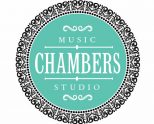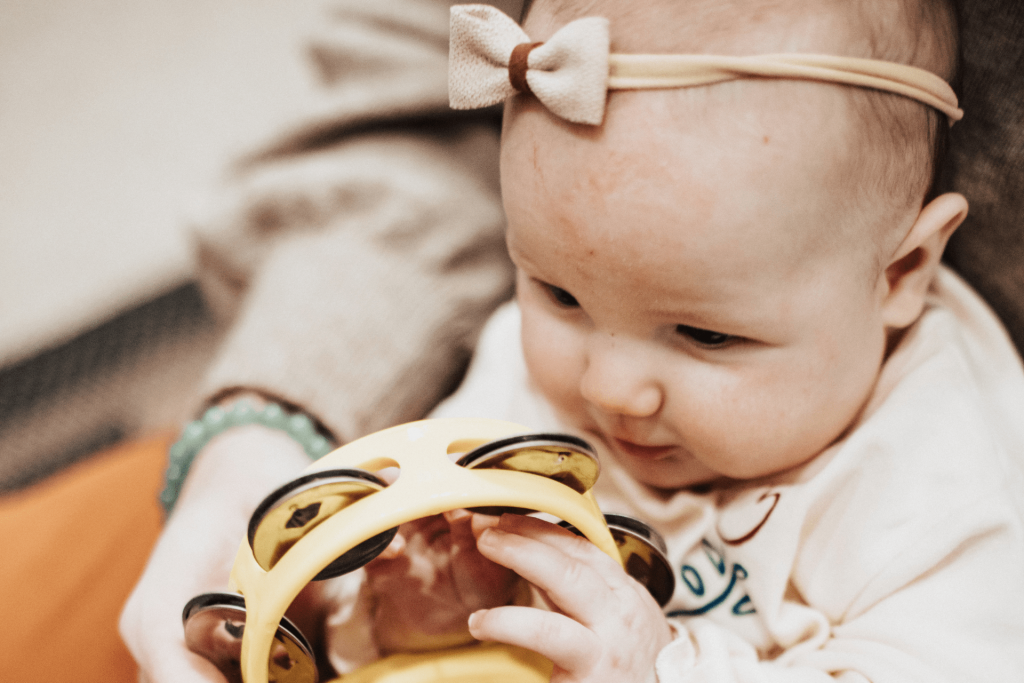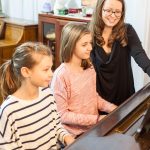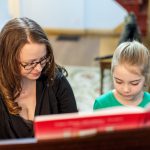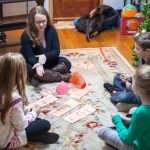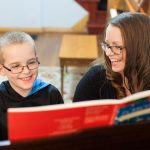You’re doing everything right: reading to your kid, talking through their day, limiting screen time. But somehow, their language still isn’t catching on like you hoped. Here’s the truth most people miss: music and language acquisition are deeply connected.
If your child isn’t hitting milestones, or if you just want to supercharge their development, music may be the missing link. I’m not talking about turning on the radio and having a jam sesh (though there are benefits to that, too). I’m talking about real, hands-on, joyful music-making that activates the brain and sparks communication. Ready to learn more?
What the Research Really Says About Music and Language
If you’ve ever watched a baby bounce to the beat or a toddler light up when you sing, you’ve already seen the connection between music and language acquisition in action. But it’s more than just cute; there’s actual science to back it up.
Studies show that children who participate in interactive music classes early on develop stronger communication skills, smile more, and show more advanced brain responses to sound. According to Science Daily, even one-year-olds exposed to group music experiences show measurable benefits in how they process and respond to language.
And it doesn’t stop there. Reviews of multiple studies have found that rhythm and melody are strong predictors of a child’s language skills. From understanding words and grammar to developing phonological awareness, the way we engage with music directly shapes how young children learn to speak, read, and express themselves.
Why Music Activates the Language Centers of the Brain
Music and language may seem like two different skills, but neurologically, they’re close neighbors. Both rely on rhythm, pitch, timing, and pattern recognition, and they use overlapping areas of the brain to process sound and meaning.
When a child claps along to a beat or sings a melody, they’re not just having fun; they’re training their brain to recognize timing, syllables, and emotional tone. According to Frontiers in Psychology, the connection between music and language begins in infancy and continues throughout childhood, reinforcing key neural pathways that support speech, memory, and comprehension.
It’s no wonder that kids who engage with music early often speak sooner, express themselves more clearly, and show stronger listening skills. Music doesn’t just support language; it helps build the very systems the brain uses to understand and produce it.
The Power of Rhythm, Melody, and Movement
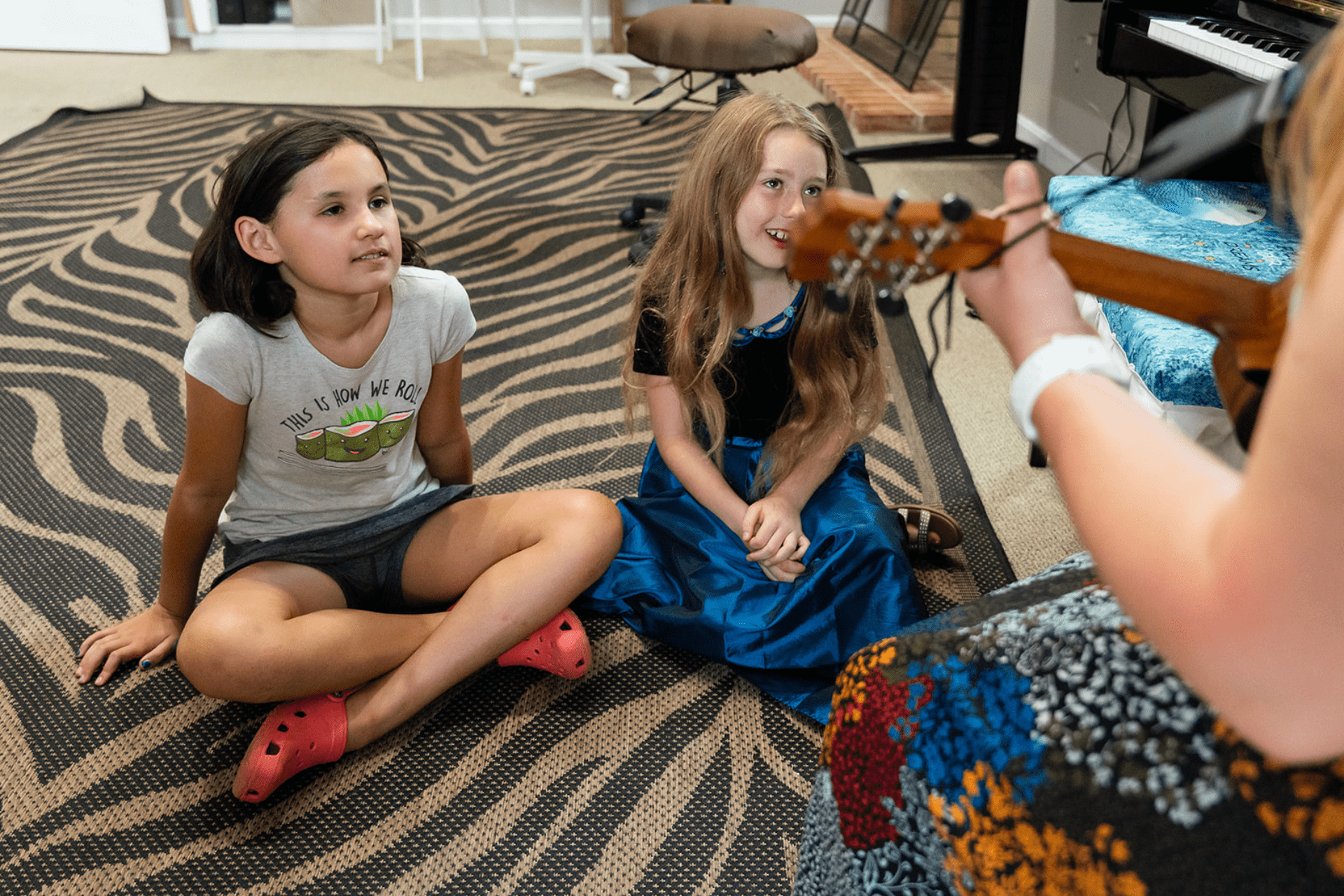
It’s not just the sound of music that matters; it’s how kids physically interact with it. Clapping, bouncing, dancing, and singing all work together to engage the senses and build stronger brain connections.
Rhythmic components of music help children learn to recognize timing, syllables, and sentence structure. Melody supports memory and emotional expression. Movement ties it all together, reinforcing what they hear and feel through the body. These multisensory experiences stimulate the parts of the brain tied to speech, comprehension, and motor development, especially in young learners.
Babies who are exposed to rhythmic movement and interactive music are literally building the pathways they’ll need for speaking, reading, and socializing later on. It’s not passive listening; it’s whole-body learning.
How Music Supports Children With Speech Delays
Music is a powerful tool that speech therapists and educators utilize daily to assist children with speech delays. Speech-Language Pathologist Renee Sheline confirms what many parents and teachers have seen: music opens doors where traditional speech exercises fall short. It’s a joyful, effective bridge to better communication. Here’s how it works:
Stimulates Neural Pathways
Singing activates areas of the brain that overlap with speech centers. Even when spoken words are difficult, music can unlock alternative ways for children to express themselves.
Encourages Vocal Play
Songs naturally invite kids to experiment with pitch, volume, and rhythm, all of which support the physical development of speech.
Builds Listening and Repetition Skills
Catchy tunes and repeated lyrics help children practice key sounds and words in a low-pressure, enjoyable way.
Improves Breath Control and Timing
Singing and musical phrasing support breath coordination, which is essential for clear speech.
Reduces Anxiety and Builds Confidence
Music provides a safe, joyful space where children feel free to participate without the fear of getting it “wrong.”
Incorporates Movement for Full-Body Learning
Dancing or tapping to a beat reinforces rhythm and pacing, which directly translates to improved verbal expression.
Music, Language, and Social Development Go Hand-in-Hand
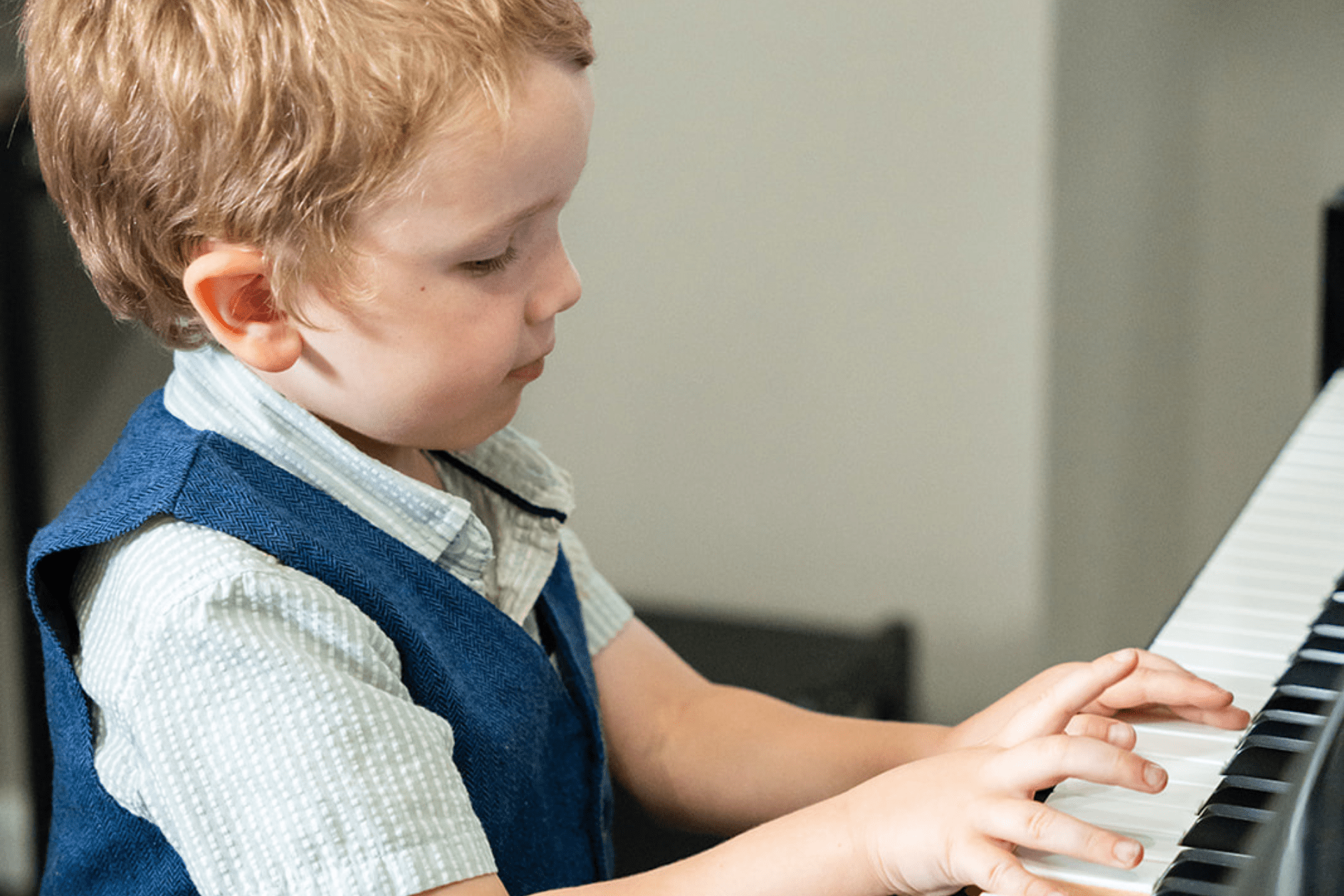
Music builds internal and external connections. When kids engage in music together, they’re not just singing or clapping. They’re learning how to take turns, listen, respond, and share space with others. All of these skills are essential for both language and social growth.
Whether it’s a music class, a sing-along at home, or dancing in the kitchen, these shared experiences create natural opportunities for bonding and communication. Babies babble along to rhythms. Toddlers follow lyrical patterns. Older kids learn how to lead or harmonize. It’s all language in action.
Even for shy or hesitant talkers, music often becomes the way in. It’s less intimidating than conversation, yet rich with expressive potential. And when music becomes part of everyday life, it creates a foundation of connection, confidence, and community that kids carry into every other part of their development.
Early Music Exposure Means Lifelong Learning Benefits
When your child plays music, they’re doing more than learning notes; they’re building a brain ready for life. Research shows that early music exposure boosts memory, focus, and cognitive flexibility, which are all skills that support strong academic performance from kindergarten to college.
In fact, many high-achieving professionals, such as doctors, engineers, and scientists, share one thing in common: a background in music. Music lessons teach kids how to practice, pay attention, and solve problems creatively. Those skills matter in every subject and every stage of life.
Music and Language Acquisition: Frequently Asked Questions
What are music and language acquisition skills?
Music and language acquisition skills are the foundational abilities that support a child’s ability to process rhythm, pitch, and phonemic contrasts; all critical for spoken language. Through musical activities such as nursery rhymes, clapping games, and singing, children develop neural networks that support both music and language development.
What is the connection between music and language?
Music and language are closely tied through shared cognitive processes. Both rely on timing, pattern recognition, and auditory memory. Musical games and songs with repetition and rhythm, like nursery rhymes, help children detect phonemic contrasts, improve pronunciation, and support cognitive development in the same regions of the brain responsible for processing language.
Do musicians learn languages faster?
Yes. Research shows that musicians often have enhanced auditory processing, which makes it easier to identify and replicate phonemic contrasts in new languages. Musical training strengthens neural networks that are key to pronunciation practice and listening comprehension, giving musicians a natural advantage in language learning.
Does music help with learning a language?
Absolutely. Engaging in musical activities supports language acquisition by activating the brain’s auditory and motor areas. Songs, rhythm games, and even simple nursery rhymes provide rich opportunities for pronunciation practice, vocabulary development, and memory retention; all of which make learning a new language easier and more enjoyable.
Set the Stage for Learning With Music Lessons at Chambers Music Studio 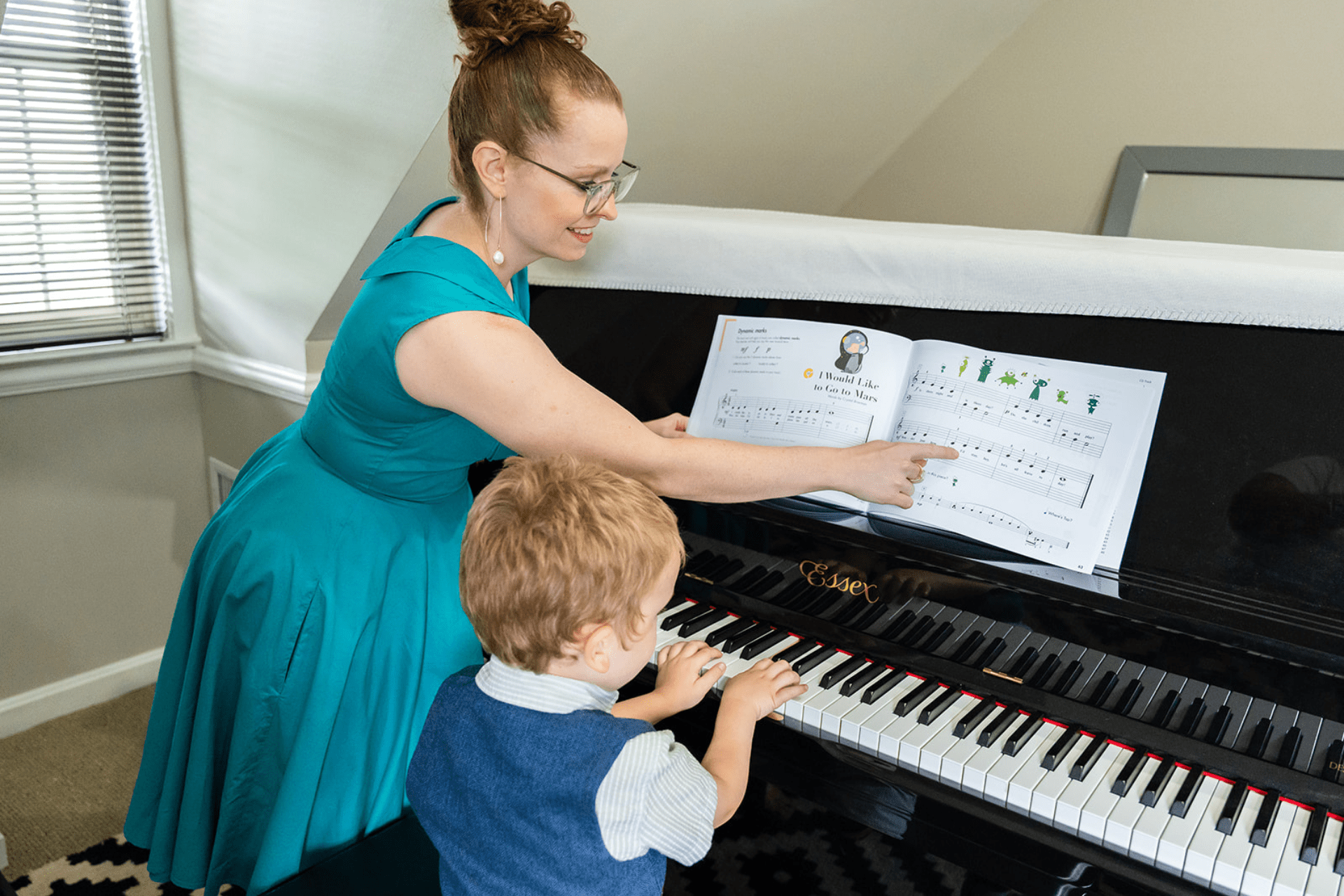
If you’re ready to support your child’s communication skills, confidence, and cognitive growth, music lessons are a powerful place to begin. Sign up today at Chambers Music Studio and give your child a head start that lasts a lifetime.
